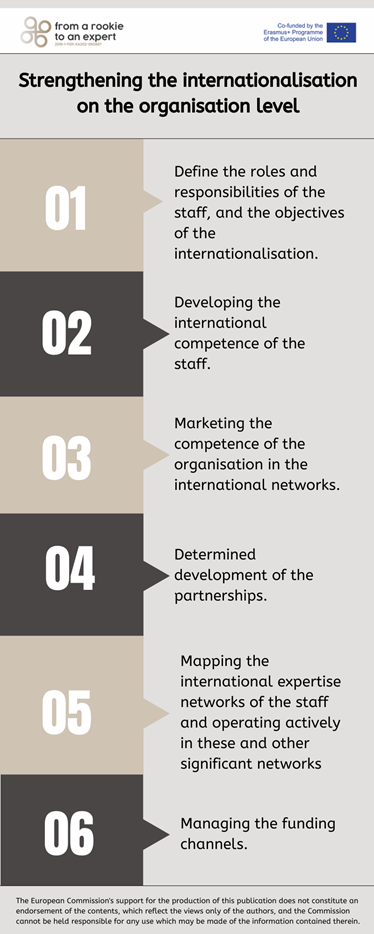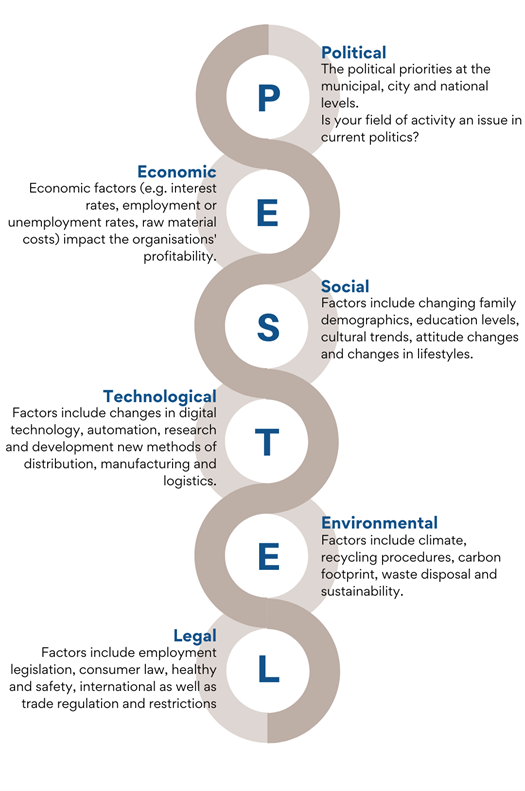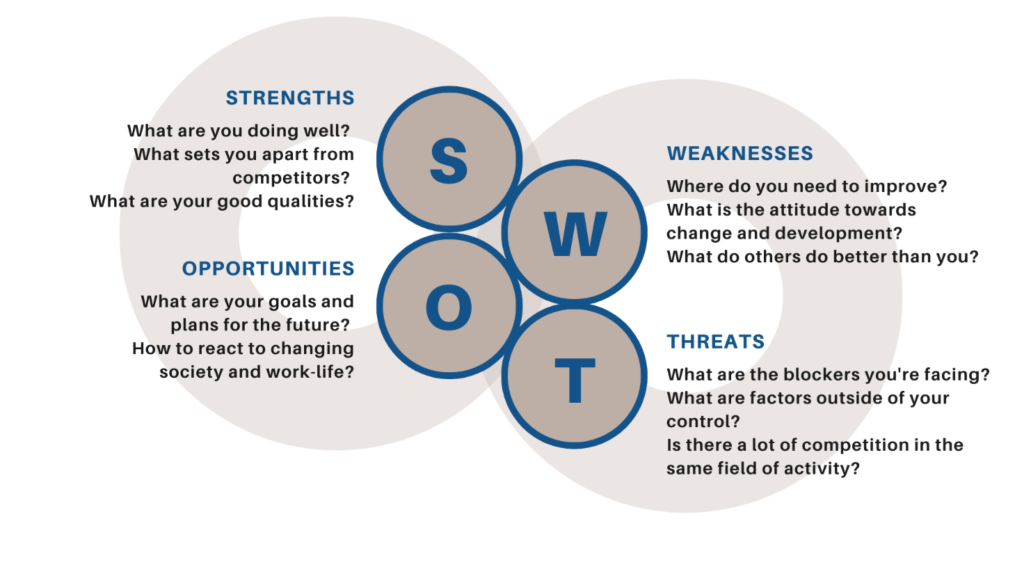Strategist
Module 3.3. – Expert level
Strategic planning of internationalisation activities is important. Ensuring sustainability, high quality and commitment of the management require that you can make long term planning based on the needs of your students and staff as well as the organisation, world of work and regional needs.
Definition
An expert on Internationalisation Strategy is a staff member who is responsible for or who takes part in shaping the internationalisation strategy of his or her organisation.
This module is for you if…
you have experience in international activities and you would like to go for developing your internationalisation strategy or apply for the Erasmus+ accreditation
What you are going to learn…
In this module you will reach the top of the ladder: you will learn about
- internationalisation strategy – what it is, why is it important, what are the benefits, how to start doing it.
- the Erasmus+ accreditations – key elements of the Erasmus accreditation scheme; what are the benefits of the accreditation; get familiar with the application process.
- Lead the creation or update of organisation’s internationalisation strategy
- know the difference between an Erasmus Plan and an International Strategy
- understand the benefit of the Erasmus+ accreditation for your organisation
- know the main features of the Erasmus Accreditation Scheme
- be familiar with the application process of the Erasmus Accreditation
- Apply for and hopefully receive the Erasmus+ accreditation
Training Topics
Topic 1: Internationalisation strategy
What is it?
Strategy is a plan that helps the organisation to get to a certain goal. With a strategy the organisation will also address a set of choices, actions and ways to achieve the goal. Internationalisation strategies must align with other strategies of the organisation. The vision, mission, values and strategic goals of the whole organisation become also important sides of the internationalisation.
This video explains Why the strategy and strategic planning is needed.
Video about strategic planning on Youtube
Why is it important?
Usually, the goal of the strategy is one of the following: to act more effectively or somehow better, to satisfy the customers better or to create new businesses. The strategy work is an ongoing process. It is often very fast and therefore the organisation must be prepared to anticipate and act to changes of the operating environment. The planning and implementation of the strategy are closely linked with each other.
How to do it?
Look at this link If you want more information about how to make internationalisation strategic plans.
This guide will provide practical guidance and advice for the strategic planning of international cooperation to VET providers. It gathers both small and large organisations, countries and VET systems at different stages of internationalisation. It builds first and foremost on EU cooperation, but also takes global aspects into account.
The Go International practical guide on strategic internationalisation
The video below explains the key elements of International Strategy and it is based on the publication “Go international – a practical guide on strategic internationalisation in VET”.
Practical steps to make an internationalisation strategy:
- Get to know the strategy of your organisation
- Plan how to develop the internationalisation in your organisation aligned with the overall strategy
- Plan how to involve the staff
- Find out what your organisation already does, which sections and operations your organisation wants to develop
- Make a plan of operations and a management plan how to lead the staff
By looking this video, you will learn more about international journey of Vamia Vocational College.
What to consider when strengthening the internationalisation on the organisation level?

- Define the roles and responsibilities of the staff, and the objectives of the internarionalisation.
- Developing the international competence of the staff.
- Marketing the competence of the organisation in the international networks.
- Development of the partnerships.
- Mapping the international expertise networks of the staff and operating actively in these and other significant networks.
- Managing the funding channels.
Strategy tools
There are several tools that can be used to create, refine and evaluate the company strategies. Here are some examples.
PESTEL and SWOT analysis
Before focusing on the company’s internal factors and conducting a SWOT analysis, it is recommended to carry out a PESTEL analysis focusing on external issues. The external factors are the same for other companies and thus for potential competitors. The strategy must take into account the effects of external factors and changes in the operating environment. By first looking at external factors and their effects on the company’s operations, it helps to think more broadly and to find internal factors that are not so self-evident.
PESTEL analysis
Pestel is a tool often used by marketers to analyse and monitor the external factors that have an impact on an organisation. It is possible to make a PESTEL analysis of other organisations, too.

SWOT analysis
It is useful to make a SWOT analysis about organisations internationalisation. It involves listing the strengths, weaknesses, opportunities and threats that the organisation faces when working with internationalisation at home or abroad for example mobility and international projects.
Here is an example for making a SWOT-analysis for your organisation. There are some questions listed, which can help you to define and think through the attributes that concern your organisation.

The EFQM Excellence Model
The EFQM Excellence Model is a performance assessment and development tool. EFQM is based on a quality management model and is best suited for organisation-wide assessment.
Lean
Lean is a management philosophy. Lean is a method that brings together several ideas related to process development and quality. Lean is based in particular on increasing customer value by reducing process waste and unnecessary operations.
Blue Sea Strategy
The goal of the Blue Sea Strategy is to help organisations create a new competitive market – the Blue Seas. In highly competitive industries, industry boundaries are typically clear, products are comparable, and competitors are often equally strong. In this case, competition usually focuses to price and operational efficiency
VRIO
The VRIO is a business analysis framework that is part of an organisation’s larger strategic plan. The model allows an organisation to identify resources that create a competitive advantage that are operationally valuable, rare, difficult to copy or replace, and effectively organised.
Topic 2: Erasmus+ Accreditations
Please accept all cookies if you cannot see the video.
Erasmus accreditation – Introduction
As we have seen in the module 2.2 “Internationalisation abroad” Erasmus accreditation is one of the key features of the new Erasmus+ Programme (2021-2027).
Module 2.2. – Internationalisation abroad
In a nutshell, the accreditation is a new way to access mobility activities under the Erasmus+ Programme using an easier application procedure that allow your organisation to receive stable funding.
Award of the Erasmus accreditation confirms that the organisation
- wants to open up to cross-border exchange and cooperation
- is committed to the Erasmus programme through a regular participation in Key Action 1
- has set up an International Strategy and an operative Erasmus Plan in which mobility is one part.
From the Mobility charter to Erasmus accreditation
The accreditation is not a totally new idea.
Indeed, it is an established and successful practice for VET providers and Higher Education Institutions (HEIs) since 2014. In the previous programme period, VET and HE providers had the chance to receive the Erasmus Mobility Charter: a formal acknowledgement of the proven track records of the organisation to promote high-quality mobility for learners and staff and the committment to participate in European and international cooperation.
The Erasmus Charter proved to increase the quality and operational capacity of beneficiaries regarding the organisation of mobility activities and the development of European and International cooperation activities.
Thanks to the success and the impact that the Erasmus Mobility Charter had in the previous programme for VET providers and HEIs, the European Commission decided to extend this practice. From 2021 the accreditation has been introduced for all sectors, including schools from general education and adult education.
The main differences between the Erasmus Charter and the Accreditation are:
- the education sectors that can benefit of this acknowledgement: all education sectors with the accreditation, only VET providers and HEIs with the Charter
- eligibility criteria for the application: experience and proven track records in organising mobility activities were mandatory to obtain the Erasmus Mobility Charter while the new accreditation scheme is more inclusive without intitial barriers
Benefits and responsibilities of Erasmus accreditation
The accreditation can represent the turning point in the development of your organisation towards a more systematic and strategic approach in internationalisation and mobility activities.
Benefits
The Erasmus+ accreditation can be compared to a membership card with benefits. Once you have this card, you have several advantages:
Secure and stable funding
Your organisation can rely on stable annual funds for mobility activities for the whole duration of the programme (or at least for the whole duration of the accreditation that can be withdrawn by the National Agency). This means that funding for the learner or staff mobility is ”guaranteed”.
Easy procedure
When your organisation receive the Accreditation you are entintled to access a simplyfied application procedure by declaring the number of mobilities that your organisation aims to implement the following year. This request does not go through a “formal assessment” with award criteria, but the application is evaluated only against eligibility and formal criteria.
Strategic thinking
Stable annual access to funding and easy application procedure enable your organisation to focus on long-term and strategic goals. Not being obsessed by money also means that you can use your energy to set up a strong and competent team dedicated to International activities, thus enlarging your international department.
Cooperate in a more reliable way at international level with other stakeholders
The above-mentioned benefits mean that your organisation can cultivate long-term relationships with education providers and companies abroad.
Please note that the Erasmus Accreditation allows easier access to Key Action 1 funding but does not concern Key Action 2 or any other action of the Erasmus programme.

Responsibilities
Definitely the accreditation has long lasting benefits for your organisation. However, you should carefully consider pros and cons before applying for the accreditation.
Here are the main implications and obligations of accreditation:
- Be awarded with the accreditation means to accept strict quality criteria. Indeed, organisations that decide to apply for Erasmus accreditation have to adhere to the Erasmus Quality Standards, which set out the extent to which activities in their organisation should be organised to ensure a good quality of mobility to be organised. Not following such criteria implicate to receive a negative assessment by your national agency which could end with the accreditation withdrawal.
- Your organisation must respect the Erasmus+ plan approved by the national agency. Organisations that decide to apply for Erasmus accreditation have to prepare an Erasmus Plan. Set up the Erasmus Plan and the related International strategy is not an easy and fast process.
- Implement regular mobility activities: it’s compulsory for accreditated organisations to organise mobilities activities on a regular basis following the Erasmus Plan.
- Be awarded with the accreditation means going through periodic audit to mantain the status. The accreditation holders may be subject to monitoring, on-the spot / system checks by the National Agency in order to track the progress and performance of the organisation, ensure the respect of the agreed quality standards.
Especially if your organisation does not have proved experience in mobilities activities, it could be not so easy to follow the quality criteria, respect the Erasmus plan, go through periodic audit. It could be a better idea to take into consideration other possibilities offered by the Erasmus+ programme.

IMPORTANT – Termination of the Accreditation
Even if the Erasmus Accreditation validity is supposed to last until the end of the programme (2027), the National Agencies, which are responsible for ensuring the respect of the quality standards, may unilaterally terminate the accreditation under specific circumstances:
- if no applications for funding have been made under that accreditation during at least three years
- in case of continued failure to comply with National Agency’s instructions and deadlines
- in case of poor or very low performance, bad financial management, repeated or significant violations of the rules of the Programme
All these aspects could be the reasons to withdraw the accreditation.
Alternatives to accreditation
It’s important to bear in mind that the accreditation is not obligatory for taking part in Erasmus+ Mobility projects. Mobility in the Erasmus+ Programme is also open to applicants which may not wish to be accredited, but which nevertheless would like to participate in transnational mobility activities.
Especially if you do not have enough experience you can be involved in mobility experiences in other ways as indicated in the Erasmus+ Programme Guide.
- Applying for funding to Short-term projects for mobility of pupils and staff of 6 to 18 months of duration. These projects are meant for new comers, i.e organisation with no or little experience.
- join the Programme without submitting an application but by becoming a member in a mobility consortium (you can ask to join an accredited consortium that is accepting new members) or act as an hosting organisation (your organisation can easily become a host for learners or staff coming from a partner organisation abroad)

These are good entry-level experiences to star your journey. Then, if you are interested in long lasting experiences you may decide to apply for the accreditation. On the contrary, organisations that are simply interested in occasional or small-scale participation to the programme can keep using these options and never apply for the accreditation.
Who can apply and Accreditation Types
Applications are open to organisations from Programme Countries. Check the list of elegible countries at the website of European Comission.
Eligible participants
Almost all Organisations working in the fields of adult education, vocational education and training (VET) and school education are eligible to apply for an Erasmus Accreditation. Please check the “Eligibility criteria” in the programme guidelines to know the full list of eligible applicants in each field at the European Comission website. Also ask your national agency if there are further restrictions/specifications in your country.
If your organisation works in more than one field you should choose the accreditation based on the type of the activities you want to implement. You can also obtain the Erasmus Accreditation in different fields, but you can have only one Accreditation in the same field.
Two options when applying
Apply as an individual organisation
Your organisation applies to receive funding only for its own staff and/or learners.
Apply as a mobility consortium
Why a mobility consortium?
It’s a way to allow organisations to pool their resources together as well as share expertise, knowledge and good practices.
Please bear in mind that
- An organisation can be coordinator of only one consortium per educational field.
- When you become an accreditated organsation you can not apply for short-term Key Action 1 projects which are dedicated to non-accredited organisations. The other members of the consortium could apply for a non-accredited project at the same time.
Erasmus Plan VS Internationalisation Strategy
To apply for Erasmus+ accreditation, educational institutions have to outline their own strategy for medium- and long-term internationalisation activities. All the application process is centred on the preparation of two documents:
How to apply and how to prepare a good application
Before you apply
- Read the “Guidelines for assessment of applications for Erasmus accreditation in the fields of adult education, vocational education and training, and school education”. This document outlines the process for assessment of applications for Erasmus accreditation in all different education fields.
- Consult the Rules of application to the Erasmus accreditation call.
How to apply
Applications are managed by the national agency; therefore, the application must be submitted to the National Agency in your own country.
To know more about the application process for prospective applicants when applying for an EU grant under the Erasmus+ Programme, please consult this link at the European Comission website.
How to get the funds
If your application is successful, you have access to the Key Action 1 fast track procedure which consists of filling in a simplified application form every year. Just providing basic information, such as the numbers of the participants and the activities types, your National Agency will allocate the funds to your organisation.
On your NA website you will find detailed information about how the allocated funds are distributed among accredited organisations.
The appilcations form
Here you can find a sample from oph.fi of the Finnish application form
Your national agency will organise webinars explaining how to fill in the form and usually they are also available with telephone advice sessions to support you in making your application. Get in contact with them.
How to prepare a good application for accreditaion
You can watch this video about the steps needed for good application on youtube.
Or you can read the steps here:
1. Identify needs and challenges
Think how to use mobility activities to improve your organisation and address needs and challenges you are facing.
2. Create a dedicated team
You need a team for international activities. Remember it’s important to ensure that all members of staff know about the objectives of your Erasmus+ plan and how they are contributing to your strategic objectives.
3. Link to the strategy
Link your Erasmus Plan to other organisation’s strategies and strategic documents of your organisation. In this way you will make sure to include European activities as an integral part of the development plan of your organisation.
4. Define the goals, number and types of mobilities
Plan the mobility activities you want to organise and how many participants you want to support with the Programme funds. The chosen targets and numbers must be realistic and appropriate based on your organisation’s size, experience and Erasmus Plan objectives.
You should be able to justify the estimations for the number of staff and learner participants and explain why such estimations are realistic and appropriate.
Finally, you should also consider the profiles of staff and learners to be involved.
5. Read carefully the Erasmus+ quality criteria
Please carefully read the Erasmus quality standards before submitting your application
Approximate timetable
Calls for awarding the accreditation are published annually on National Agencies’ websites. Check always with your National Agency.
Show your skills and earn your open badge here.

The European Commission’s support for the production of this publication does not constitute an endorsement of the contents, which reflect the views only of the authors, and the Commission cannot be held responsible for any use which may be made of the information contained therein.